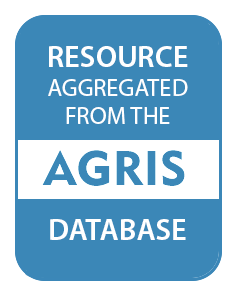Location
PNAS is one of the world's most-cited and comprehensive m
The National Academy of Sciences (NAS) is a private, non-profit society of distinguished scholars. Established by an Act of Congress, signed by President Abraham Lincoln in 1863, the NAS is charged with providing independent, objective advice to the nation on matters related to science and technology. Scientists are elected by their peers to membership in the NAS for outstanding contributions to research. The NAS is committed to furthering science in America, and its members are active contributors to the international scientific community. Nearly 500 members of the NAS have won Nobel Prizes, and the Proceedings of the National Academy of Sciences, founded in 1914, is today one of the premier international journals publishing the results of original research.
Members:
Resources
Displaying 6 - 10 of 15Global forecasts of urban expansion to 2030 and direct impacts on biodiversity and carbon pools
Urban land-cover change threatens biodiversity and affects ecosystem productivity through loss of habitat, biomass, and carbon storage. However, despite projections that world urban populations will increase to nearly 5 billion by 2030, little is known about future locations, magnitudes, and rates of urban expansion. Here we develop spatially explicit probabilistic forecasts of global urban land-cover change and explore the direct impacts on biodiversity hotspots and tropical carbon biomass.
Urban land teleconnections and sustainability
This paper introduces urban land teleconnections as a conceptual framework that explicitly links land changes to underlying urbanization dynamics.
Hydroperiod regime controls the organization of plant species in wetlands
With urban, agricultural, and industrial needs growing throughout the past decades, wetland ecosystems have experienced profound changes. Most critically, the biodiversity of wetlands is intimately linked to its hydrologic dynamics, which in turn are being drastically altered by ongoing climate changes. Hydroperiod regimes, e.g., percentage of time a site is inundated, exert critical control in the creation of niches for different plant species in wetlands.
Extending the timescale and range of ecosystem services through paleoenvironmental analyses, exemplified in the lower Yangtze basin
In China, and elsewhere, long-term economic development and poverty alleviation need to be balanced against the likelihood of ecological failure. Here, we show how paleoenvironmental records can provide important multidecadal perspectives on ecosystem services (ES). More than 50 different paleoenvironmental proxy records can be mapped to a wide range of ES categories and subcategories. Lake sediments are particularly suitable for reconstructing records of regulating services, such as soil stability, sediment regulation, and water purification, which are often less well monitored.
Legacy of human-induced C erosion and burial on soil–atmosphere C exchange
Carbon exchange associated with accelerated erosion following land cover change is an important component of the global C cycle. In current assessments, however, this component is not accounted for. Here, we integrate the effects of accelerated C erosion across point, hillslope, and catchment scale for the 780-km ² Dijle River catchment over the period 4000 B.C. to A.D. 2000 to demonstrate that accelerated erosion results in a net C sink.



